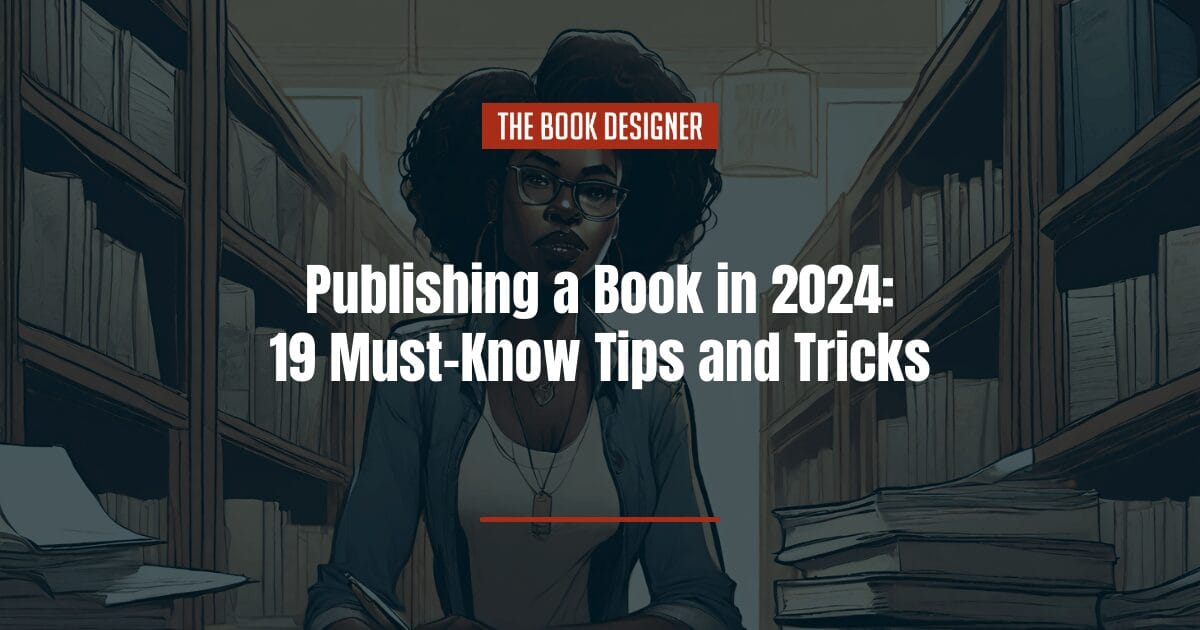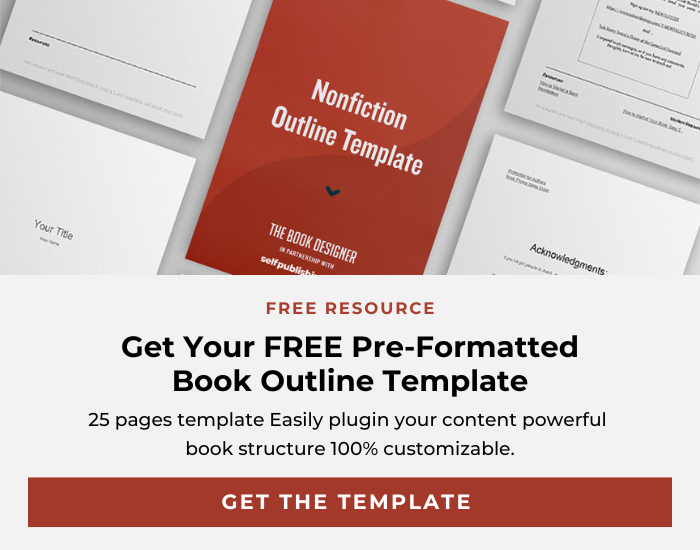Publishing a book on your own has finally received a level of acceptance in the publishing industry, and lots of people are thinking about diving in.
But what do you really need to know before publishing a book? I’ve been helping authors get into print since the early 2000s. There are a lot of resources out there to help you publish a book, and many of them are really good and worth your money (get in touch with us if you’re looking for help on your self-publishing journey!). Of course, there are some not-so-great resources out there, too.
That’s why I’ve put together this guide, so you know the landscape you’ll be traveling when publishing a book and can avoid the potholes.
So here they are, the top 19 things you MUST KNOW before self-publishing your book.
Below are 19 things you absolutely need to know before you begin your self-publishing journey:
1. You Will Have to Spend Money Publishing a Book
A lot of people get into self-publishing thinking they won’t have to spend anything at all, but that’s really not the case. I don’t want you to be disappointed, but it is going to cost something to get your book into print. At the low end you can expect to at least pay for proof copies of a print on demand book and the shipping fee to get them to you. But most authors going into this are going to pay more, and some will spend substantially more to get their book just the way they want it.
Doing everything yourself and not worrying about whether your book looks professional or not, you can get away for under $100 and get 5 copies of your book in the bargain. But if you’re publishing a book that’s been edited, laid out to look the way a book should, and has a cover on it that will stand a chance of competing in the marketplace with all those books from big publishers, you’re going to have to budget $3,000 to $10,000. And if you print offset, want to hire marketing or publicity help, or hire a high-end “book doctor,” you could be looking at significantly more.
The important thing to remember is that you’re in charge. As long as your goals for publishing a book line up with your budget, or you can crowdsource the money you’ll need for your book (via kickstarter.com) you’re good to go. That leads us to the next consideration.
2. Decide Whether You Want a Pro Book
This decision is a big one for lots of people. Let’s face it, the book you’ve been dreaming about looks like the latest Stephanie Meyer, doesn’t it? Well, here’s the problem. If you want a book that looks like it was produced by professionals, you’re going to have to hire those professionals to create the book for you.
It’s just not possible to acquire all those editorial, design, typography, and cover creation skills in the next few weeks so you can do it yourself. That’s why this is such a big decision—it will affect lots of other things you’ll be doing later on.
Four people will be really important if this is the way you want to go: editor, cover designer, book formatter / layout artist, and marketing consultant. The first three will get your book where it should be; the last one is who can tell you what that book ought to look like, how to spread the word about it, and how it should be priced.
I’m not saying you can’t do any of this yourself, because I don’t know what talents and experience you bring to the table, do I? That’s what you’ll have to decide.
But keep in mind that if you want your book to take you some places—like consistent sales, podcast appearances, bookstore signings, top speaking gigs—you’re going to need a book that looks as good as anyone else’s book. And that means finding the people who can do it with you.
3. You Can Get Help from Companies That Do This for a Living!
Selfpublishing.com, Smashwords, and BookBaby are three of the top companies in the industry for publishing a book. They have entire teams that can help you get your book self-published. More on this in point #13.
4. Find a Great Editor Who Specializes in Your Genre
There are thousands of editors out there. You can find them on Upwork, Fiverr, other freelancing sites, or through direct referrals. Self-Publishing School has a curated list of folks that you have access to if you choose to work with them. The most important thing is making sure you find an editor that jives with you and your needs, and that is familiar with your genre of book.
Editing fantasy fiction is a world of difference from a self-help or leadership book (bad pun, not intended!), so do your research to find the right one.
5. Your Cover Is Critical
Covers sell books. They can make or break traditionally published books and that’s equally true when publishing a book on your own. Make sure yours is great! Stick to the rules of your genre, make sure the title is crystal clear and easy to read, and don’t put your face on the cover unless you’re Oprah or Brené Brown. You can find book cover inspiration just by browsing Amazon or your local bookstore, although consider looking at other sources, too (even in unlikely places like Taylor Swift album covers!).
We also have this free Book Cover Design Checklist for you, if you need it.
6. Your Formatting Is Vital
There’s nothing more disruptive to a reader than poor formatting. One of the best tools on the market for formatting your book yourself is called Atticus. You can outsource formatting or do it yourself, but only do it yourself if you use a tool like Atticus.
7. Your Book Description Needs to Sell the Book
I cannot stress enough just how important your book description is when publishing a book. It needs to grab the attention of the reader. It needs to give a brief description of what they’ll learn (or set-up the plot or a major scene, if fiction). And it absolutely has to leave them wanting more.
Have friends read it first, before publishing, so they can tell you if it works or not.
8. Favor the Web for Resources, Not Cheap Books
I’ve linked up a ton of helpful resources for publishing a book just in this article and there is so much more out there on the web. Blog articles (like this), YouTube videos, Udemy mini-courses, and entire self-publishing courses/programs are out there to provide you with the information you need.
There are a bunch of charlatans out there trying to make money with cheap, low-quality books on how they went about publishing a book. Don’t learn from just anyone. Learn from experts. Learn from people who have real success. (Although you can grab a free e-book copy of Published. by Chandler Bolt.)
9. Making Money with Nonfiction: Niche Publishing
There are so many ways to make money with books, but if you’re nonfiction specifically, it’s true: “The riches are in the niches.”
Be the best in a narrow niche and Amazon will find ways to push you into the bigger segments. But if you start in a big broad category like “Finance.” Go into something like, “Money Management for College Students” or “Tax Advice for Single Member LLCs.”
I’m just making categories up, but you get the idea. You have to niche down when publishing a book. If you go too broad, you’re going to get lost in the masses.
10. Making Money with Fiction: E-Book Publishing
Now, if you’re a fiction writer, your ticket to making money is releasing ebooks, in rapid succession. Fiction readers are addicts, and they often read on Kindles. So, your overall page reads and read-through rate from book-to-book in your series are super important.
For more on that topic of fiction series and readthrough rates, check out this tool and article from Self-Publishing School.
11. Making Money with Business & Leadership Books: Audiobooks
People who run businesses or serve as high-ranking executives in companies—they are busy! They don’t have time to lounge on the beach and read their Kindles. They don’t have time to sit in a chair and read a paperback either. These people are on the move, and they are audiobook and podcast consumers.
They listen on the road, on the plane, while doing chores around the house. If you’re publishing a book for this audience, make sure you’re releasing an audiobook version of your book.
12. Get Your Own ISBNs
If you’re serious about publishing a book yourself, it’s worth spending the money on your own ISBNs. This gives you more control over your book’s metadata, allows you to switch printing companies without having to get a whole new ISBN (which can cause confusion for booksellers), and any order inquiries will be directed to you as the publisher of record for the ISBN rather than your publishing service company.
13. Go All-In, as Much as You Can
Not everyone can afford a $24,000-$48,000 USD program like Scribe Media offers. But I would encourage you to invest as much as you are able and comfortable investing in your book. This goes back to point #1 & #2 above.
If you don’t want a quality book that sells a lot of copies and you’re just making something for the heck of it, by all means, use Fiverr and Upwork and spend less than $100. But if you want a high-quality book that thousands of people will buy, and you want something you can be proud of showing off to family, friends, colleagues, and strangers, then invest as much as you can and get a quality book.
Teams like Self-Publishing School can really help. They educate you on the process, but they also have coaching and community support, as well as done-for-you services. They’re moderately priced with most programs under $10K, but you certainly get bang for your buck, as their authors can attest.
14. Consider SEO
SEO is the common abbreviation for Search Engine Optimization. What does SEO mean for the average author?
It means you optimize your book in a way that search engines will easily find and connect to it. You have to think from the users’ and readers’ perspectives, meaning you must consider how people will search for and find your book. Are they looking for men’s devotionals or a memoir about how dogs are man’s best friend?
Don’t go overboard and just start keyword stuffing your book title, subtitle, and description. We’ve all seen those horrific examples. Don’t be a cheater. Write a good book, have a great title and subtitle, and write a book description that sells your book. Then, if you can, which I’m sure you can, find a couple small ways to optimize for what people are searching.
15. Know Where Your Buyers Congregate
Similar to point #14, but this goes beyond search engine optimization. If you’re publishing a book on caring for children with autism, you need to know where doctors and medical professionals who treat autism gather. You also need to know where parents of children with autism gather. And it may help to know where nonprofit organizations that help autistic or special needs individuals congregate.
I use this example not as a way to take advantage of those folks, but because if your book is actually helpful and you’re passionate about helping folks with autism, then you should be the biggest believer in getting your book out there. And to do that, you need to know where those caretakers hang out.
16. Grow Your Amazon Garden
There is so much to discuss here. The Amazon bookstore is a behemoth, and it’s only growing. But to stick out from the crowd, you need to understand keywords, categories, and Amazon ads at the very least. Selfpublishing.com and Amazon both have tremendous resources on this. There’s even a tool called PublisherRocket that can help you navigate this jungle (pun intended!).
17. Blurbs and Book Reviews
You need people to speak well of your book. As you’re starting on writing it and before you publish it, make sure you have some folks in mind who could put a good word forth on your book. If they’re in your circle, good. If they are leaders in their industry and it’s the space you’re writing in, even better.
Book reviews add fuel to the fire when you’re publishing a book on Amazon. Think about it: when was the last time you ordered a product on Amazon that didn’t have any reviews? You at least want 20+ people saying your book is worth the read, minimum.
18. Bookstores: The Problem & The Solution
I know it’s the dream of every author to see their book on the shelves of Barnes & Noble. But here’s the problem: bookstores all over the United States are shutting down. Borders went out of business. Barnes & Noble has been steadily closing stores, not opening more. Remember how Amazon opened up physical bookstores for a few years? Yep, those are closed too.
Hate to be the bearer of bad news, but your local indie bookstore is about the only physical place you’ll be able to sell a copy of your book anymore, unless you’re traveling around the country and speaking at conferences. Otherwise, you should probably focus on selling your book on Amazon and the digital bookstores.
Which leads me to my final tip…
19. Change Is the Only Constant
I’m writing this article today, as current as I can possibly be. Yet, tomorrow, something could change in the industry that changes the way publishing a book is done or how books are consumed. Or maybe it will be a change in an ancillary arm to publishing, like cover generators, book title generators, AI-written book descriptions, or something else we haven’t even thought of.
We live in an age of technology and information.
That said, the basic process for publishing a book probably won’t change that much. You have an idea, you’ll need to write it or speak it in an organized format, then you’ll have to find a way to make it look like a book, and distribute that asset to others. Right now, we have ebooks, print books, and audiobooks. Who knows what the future holds?
The best thing you can do is keep an open mind and work on your book project today!
Final Thoughts on Publishing a Book
Now that you know what to consider before publishing a book, it’s time to get started! If you have a finished manuscript and want someone to take care of the publishing process for you, check out our publishing package.




